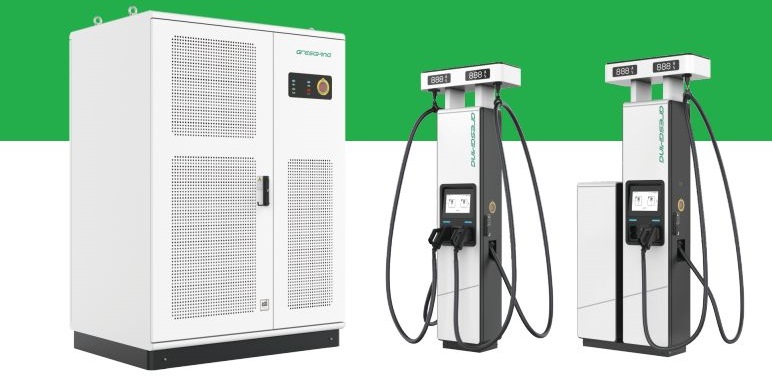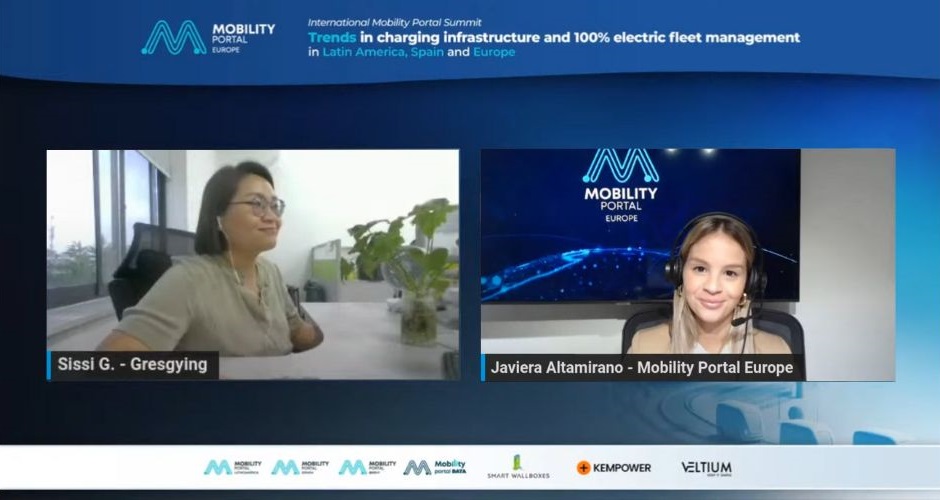The rise of Asian eMobility companies is marking a new chapter in the European landscape, given the constant innovation in their chargers and an attractive pricing proposition. And Gresgying is not lagging behind.
“We already have a success story in China, and soon it will be in Europe. We see a bright future for electric mobility,” says Sissi Gao, Sales Director at Gresgying.
In this regard, during the International Mobility Portal Summit, Gao announces the new high-power products that will be added to their portfolio.
This week, they will unveil a one-megawatt unit at an international event on charging stations in Shanghai.
“This 1000-kilowatt device is available for parallel connection, providing a power of two megawatts,” says the Sales Director.
And she adds, “The megawatt charging system (MCS) is no longer a problem at all.”
It is worth mentioning that Gao considers this technology “profitable,” as it allows investors in public charging infrastructure in China to recover their investment in just three years.
Not only that, but the company will also launch a 480-kilowatt charger at the Intersolar event, which will take place in June in Munich.
This device stands out for its ease of use, efficiency, and “future guarantee.”
“It’s a very quiet product. In addition, the operation panel and the payment sector are at a height that allows accessibility to all users,” says Gao.
Likewise, Gresgying has incorporated a cable management system.
Regarding efficiency, the charger is smaller in size, taking up very limited space and suitable for all installations.
“It employs our Star Ring power distribution technology, maximizing the utilization of all power modules,” she explains.
And she continues, “We adopt the new silicon carbide power module, offering a maximum efficiency of 97 per cent.”
Gao comments that the company also has different ways to solve the problem of insufficient power capacity, including a dynamic load management controller.
As for the “future guarantee,” Gresgying designed these 480-kilowatt power units to be connectable in parallel to offer an output power of 960 kilowatts.
“We also provide two satellites, one for regular access to connect at 300 amperes and another high-power one to connect at 500 amperes. Additionally, it is ready for megawatt charging systems,” acknowledges Gao.

The significance of fast charging: a “nod” to automakers
When asked about the importance of offering high-power chargers, Gao comments that it is important not only for users but also for electric vehicle (EV) manufacturers.
“More and more new EV models are adopting 800-volt batteries with over 240 kilowatts of maximum charging power. This is a current and future trend,” indicates the Sales Director.
And she adds, “There could be much higher tension in the battery and much faster charging.“
In this regard, compared to gasoline car users, those driving zero-emission cars are concerned about their range and charging time.
According to Gao, the “true transition” will happen when “charging service can be as fast and convenient as refuelling.”
That’s why Gresgyng, like many other companies in the sector, is developing ultra-fast chargers.
What are Gresgying’s customers requesting?
According to the company, there are currently three trends in the charging infrastructure sector.
The first involves integrating payment terminals into the chargers; the second involves including large advertising screens on the devices; and the third involves using solar energy.
While Gao acknowledges that the latter trend is a “possible solution” to avoid congestion in the electrical grids, the Sales Director highlights having “more sources of energy” as the better option.
“The energy storage system offers the possibility of storing it when supply exceeds demand, and discharging it when demand exceeds supply,” she explains.
Relive the International Mobility Portal Summit:







